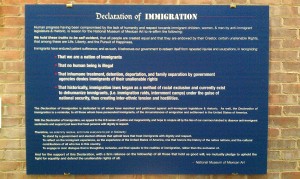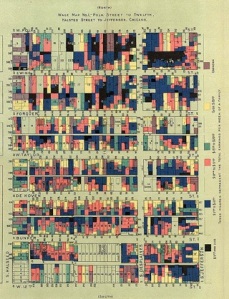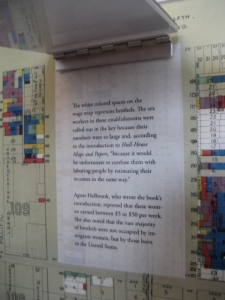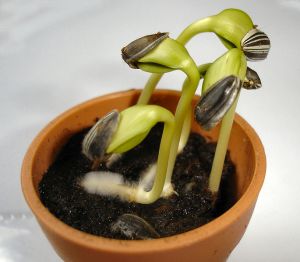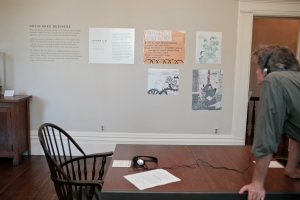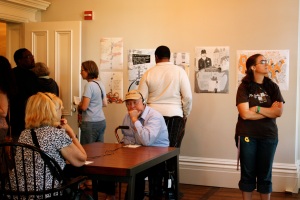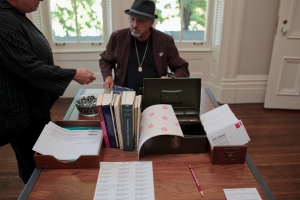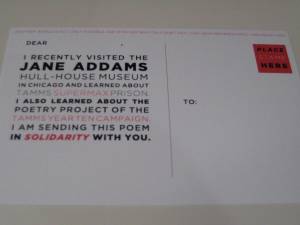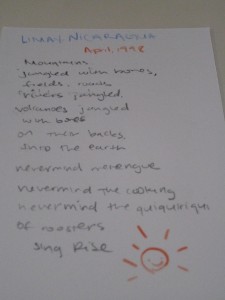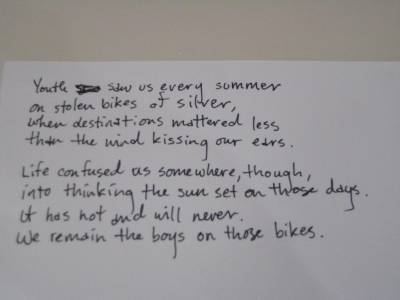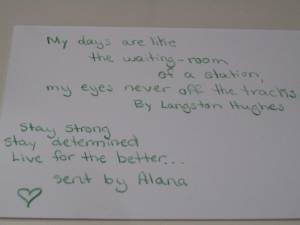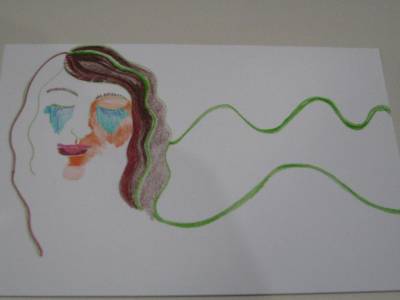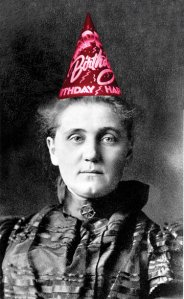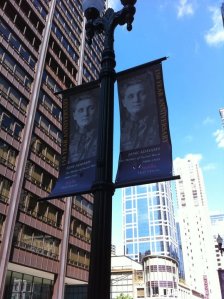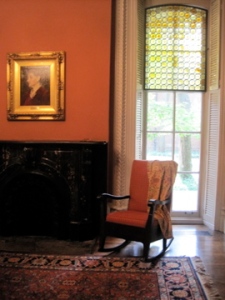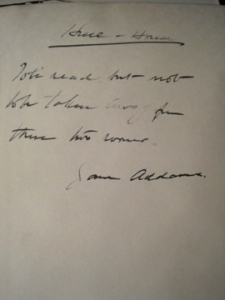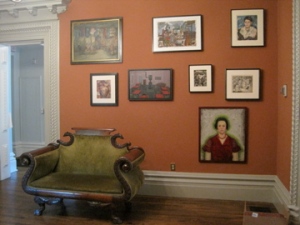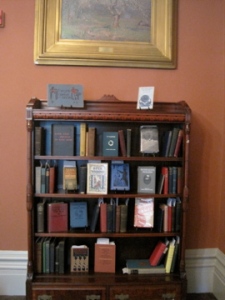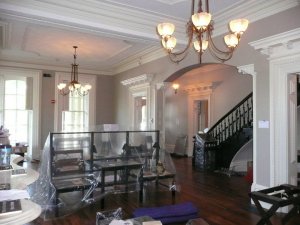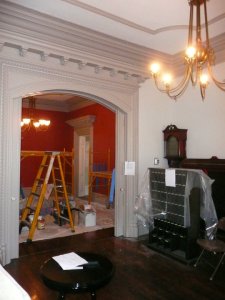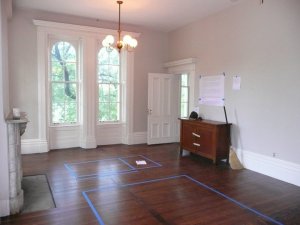Jane Addams was so cool. Really she was more than cool- Jane Addams was FRESH. When I look around the museum, give tours, or just observe visitors reactions to her legacy- I’m truly amazed at how fitting Hull-House history is for our contemporary lives. So it is not surprising that the museum focuses a lot on making those connections for the public.
Hull-House was an interdisciplinary space. The residents who lived here approached their work with the methodology of intersectionality. Today, we continue this framework of intersectionality with public programming, exhibits, and our choice to be in solidarity with many sites and organizations around Chicago and the world.
In the Residents Dining Hall we are currently displaying an exhibition piece from The National Museum of Mexican Art titled A Declaration of Immigration. This piece was first displayed at the NMoM and is now displayed in the Hull-House Residents Dining Hall. The Hull-House Museum wants our visitors to know that we stand in solidarity with the Pilsen community and Latino communities around the country. As a part of the network of the International Coalition of a Sites of Conscience it is our responsibility to make Hull-House a safe space where visitors can engage in dialogues about immigration. As a museum educator, and as someone in solidarity with The Dream Act and other progressive youth movements, it is galvanizing to watch Hull-House Museum visitors read the words “We are a nation of immigrants. No human being is illegal. We mutually pledge to uphold the fight for equality and defend the unalienable rights of all.”
Surprisingly, or not surprisingly, many people who visit the Hull-House Museum are not previously aware of the Mexican migrant stories at Hull-House. Most visitors are only familiar with the eastern European immigrant story. Unfortunately, many visitors arrive well versed in the dominate narrative used to contextualize a negative vs. positive juxtaposition of Mexican and European (im)migration. The homogenized European immigrant story is understood as “the good immigrants” who arrived to America, worked very hard, and ultimately did immigration the “right way”- (or as I sometimes say the white way)- opposed to Mexicans who are almost always contextualized as illegals, bad, undesirable and unreliable. There is a lot that can be said here. I think that is why having the Declaration of Immigration on display is so appropriate. It would be impossible for the Hull-House staff to have a dialogue about immigration with every visitor who walks through our doors. So, giving the public an alternative to our collective historical narrative of immigration by utilizing a borrowed exhibition piece from The National Museum of Mexican Art is quite powerful. We have a tool that allows us to challenge our present narratives of immigration. Telling and retelling the stories of Mexican migrants at Hull-House alongside eastern European immigrants stories makes the commonalities clear- we aren’t as different as the media, politicians, and institutions tell us we are. Putting these histories alongside our current immigration moment gives us a chance to address what is obscure, neglected, or simply erased from both the past and the present narratives of immigration.
-Mekaila, museum educator
